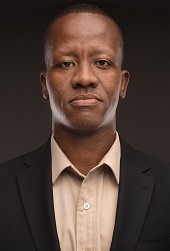
Choose the right innovation method at the right time

By Rikus Grobler, www.nis.co.na, [email protected].
I have dealt with the topic of innovation methodologies over the course of the last two months. I gave overviews on the major innovation methodologies that feature in the business environment, namely Open Innovation, Crowdsourcing, Lean Six Sigma, Lean Startup, and Design Thinking.
I am not promoting that one methodology is better than another. The different methodologies actually have a remarkable commonality. Where they differ is primarily with regard to the phase of the innovation lifecycle they emphasize. For example, design thinking emphasizes understanding customer problems, whereas lean emphasizes solution experiments.
So I investigated when and how different innovation methodologies could be applied across the whole innovation lifecycle in business to support and strengthen the innovation efforts and increase chances of success. I want to conclude the discussion of innovation methodologies by sharing some of my insight on choosing the right innovation method at the right time.
The innovation lifecycle:
To understand where a specific innovation methodology plays to its strengths, I first want to lay out the “generic” innovation lifecycle.
In essence, innovation starts with defining a problem (I prefer to use the word “challenge” though), generating solutions to the challenge, and then implementing the preferred solution and maintaining and improving the solution as circumstances and the environment changes – i.e., starting with a new challenge again. There are two important matters to note here. Firstly, that innovation is an iterative process. Secondly, although it seems that the process is linear, innovation, in reality, is “messy,” and the phases described above do not always follow on each other and where one phase stops and others start is usually not that exact. For example, you may find that you already have a solution in mind and want to implement it as fast as possible.
To support my case of playing to a specific methodology’s strengths, I want to illustrate what some of the methodologies are most useful for during the innovation lifecycle.
Design Thinking’s strength is to better understand the problem space. Design Thinking usually starts by diverging and gathering lots of insights through talking to stakeholders, followed by converging these insights into clusters and identifying key pain-points, problems or things needed to be done. The second part of Design Thinking is usually to ideate a large number of potential solutions before prototyping and testing the most promising ideas. This is also where Open Innovation and Crowdsourcing plays to its strengths.
Lean Startup is a good starting point if there is a good understanding of the problem space. Lean Startup considers everything to be a hypothesis or assumption until validated. Assumptions are prioritized and tested according to the highest risk for the entire innovation. The process to validate assumptions is creating an experiment, testing it, and learn whether the premise still stands. Lean Startup minimizes risk by measuring early on how effective the solution addresses the problem and whether you can scale the solution or go back to the drawing board before investing more resources into the innovation.
Once an innovation becomes “business as usual,” Lean Six Sigma strengths lies in optimizing process efficiency, decreasing waste, and seek constant improvement.
My plan was to include a picture of where these methodologies fit into the innovation lifecycle.
However, I found there are many ways of depicting this concept, and many of these illustrations also include methodologies that I did not cover. So I decided to leave it up to the readers to investigate the matter further on their own. Just take into consideration that, in essence, the different methodologies all talk about the same thing: iterative discovery, delivery, and improvement. They just look at it in different domains, with diverse backgrounds and different practices. Sometimes, the emphasis is more on design; sometimes, the focus is on validating hypotheses, and sometimes, the goal is to get stuff developed and delivered.
So, it probably makes more sense to just look at the different methodologies as a bunch of tools and techniques in one’s toolbox, rather than argue for one over the other, because they can all add value somewhere in the innovation lifecycle.
Next Time
To build successful innovation ecosystems, corporates should not look exclusively to traditional accounting methods to manage innovation and measure the impact. To solve this, uhm… challenge, I picked up in my research on innovation methodologies a new accounting system called “Innovation Accounting,” aimed at aligning finance with all the other parts of the company to support the discovery and growth of innovative ideas. So I want to unpack Innovation Accounting in the next delivery.
I want to conclude the discussion on choosing the right innovation methodology at the right time with a fitting quote from Abraham Maslow: “If the only tool you have is a hammer, you tend to see every problem as a nail.”
Click on the thumbnail below to order Dr Grobler’s e-book on Innovation from Amazon.













































